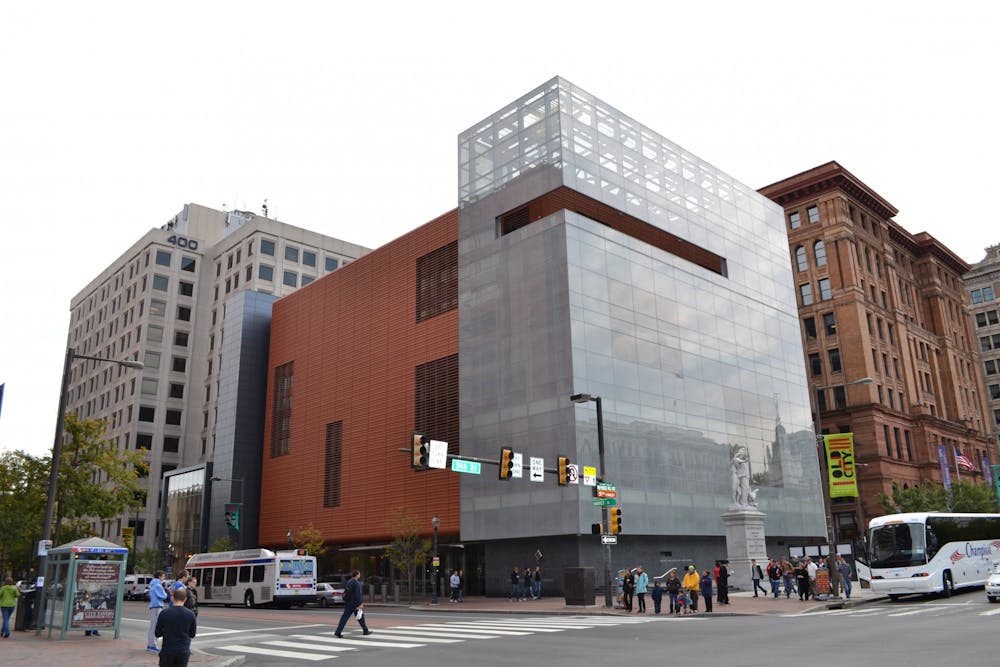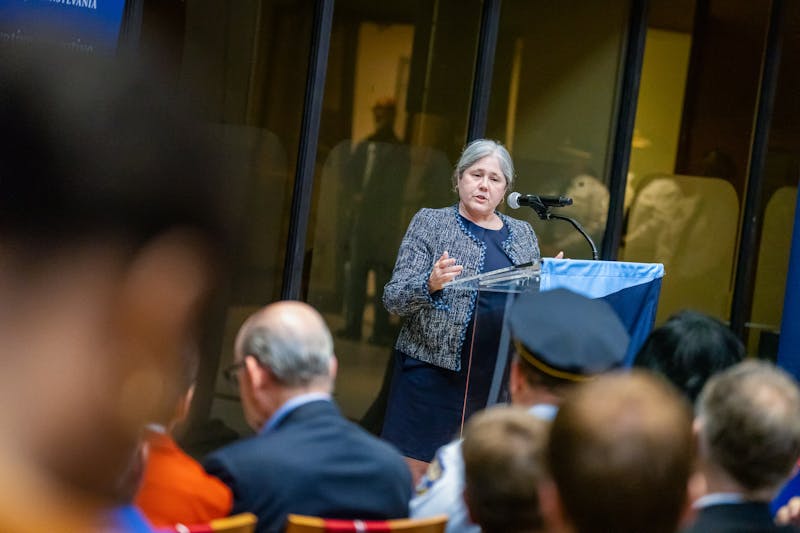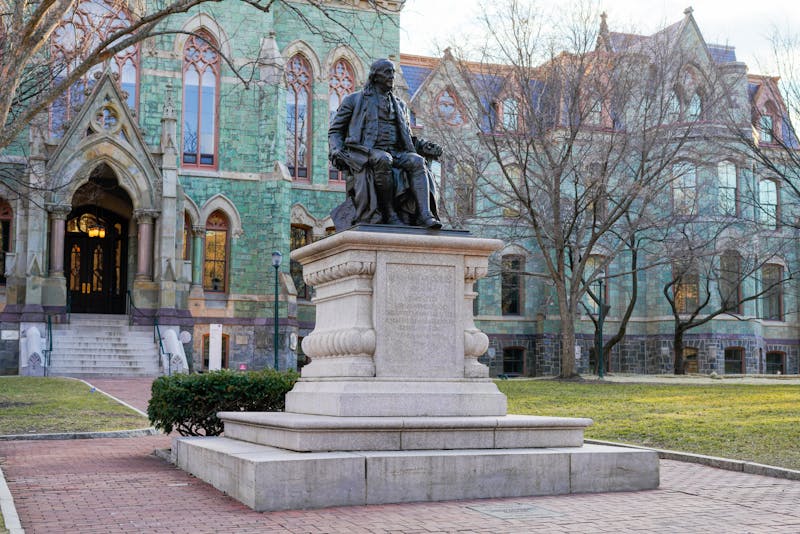
The Philadelphia National Museum of American Jewish History is located at 5th and Market Streets. (Photo by Christine Fisher | CC BY 2.0)
The Philadelphia National Museum of American Jewish History filed for Chapter 11 bankruptcy protection on Monday.
NMAJH accrued approximately $30 million in debt, most of which comes from loans taken out to fund the construction of the museum's current building at 5th and Market streets in 2010. Penn’s Herbert D. Katz Center for Advanced Judaic Studies has an established partnership with NMAJH, co-sponsoring an internship program and public events.
The Jewish history museum, which opened in 1976 and is a Smithsonian affiliate, will continue operating while undergoing reorganization, CNN reported. A decrease in funding from outside sources caused by the 2008 economic recession triggered the need for loans, officials told CNN.
“[Funding] didn’t return until the levels of pre-2008 until about a year ago,” interim CEO Misha Galperin told CNN. “In order to finish construction, the museum had to borrow money, and we were hopeful we could repay the money. We never could.”
Galperin told WHYY that another reason for the financial decline was the "period of low philanthropy" from 2008 to 2010, when they first accumulated the debt. He added that this decrease in funding hindered the museum’s ability to fundraise effectively, as “people don’t want to give money to an institution that has this kind of debt.”
Lawrence G. McMichael, the bankruptcy attorney representing the Jewish museum, told The Philadelphia Inquirer he expected the legal proceedings to take about six months. There will be no staff layoffs or cutbacks in public programming during court proceedings, Galperin told WHYY.
Galperin told CNN he believes outside contributions from philanthropic donors and corporations will keep the museum afloat.
The museum will continue to charge admissions costs for special exhibitions, while the permanent collection about Jewish life in America will remain free, CNN reported.
"[We have] even more programming and outreach online and plan to keep on going," Galperin told CNN. "We're not anticipating any fundamental change to the nature of what we do."
The museum still plans to unveil its newest exhibit, the “Evidence Room,” on April 17. The display will feature artifacts from, and the architectural layout of, Auschwitz, to “give visual testament to the atrocities of the Holocaust,” as stated on the museum’s website.
Steven Weitzman, the Ella Darivoff Director of the Katz Center, wrote in an email to The Daily Pennsylvanian that he is aware of the museum’s financial situation and is rooting for it to overcome its struggles. He added that he hoped the bankruptcy filing would extract “creativity and resourcefulness” from the organization, which would allow for long-term growth.
“The museum has added many important things to how America tells the story of its origins, bringing the experience of immigrants into that story and emphasizing the importance of religious freedom,” Weitzman wrote. “Philadelphia and indeed the nation would be deprived if those aspects of American collective experience do not remain at the heart of how it remembers its beginnings.”
Officials remain optimistic that the bankruptcy proceedings will eventually enable the museum to regain sight of and fully pursue its mission, The Jewish Exponent reported.
“We will continue to fill our vital role in preserving and interpreting American Jewish history,” Philip M. Darivoff, chair of the museum's Board of Trustees, said in a statement to The Jewish Exponent. “While no institution chooses such a reorganization lightly, this decision is expected to bring with it a reduction in debt that will create a new level of sustainability that assures our part in telling a unique and compelling story of the American experience.”
The Daily Pennsylvanian is an independent, student-run newspaper. Please consider making a donation to support the coverage that shapes the University. Your generosity ensures a future of strong journalism at Penn.
Donate






